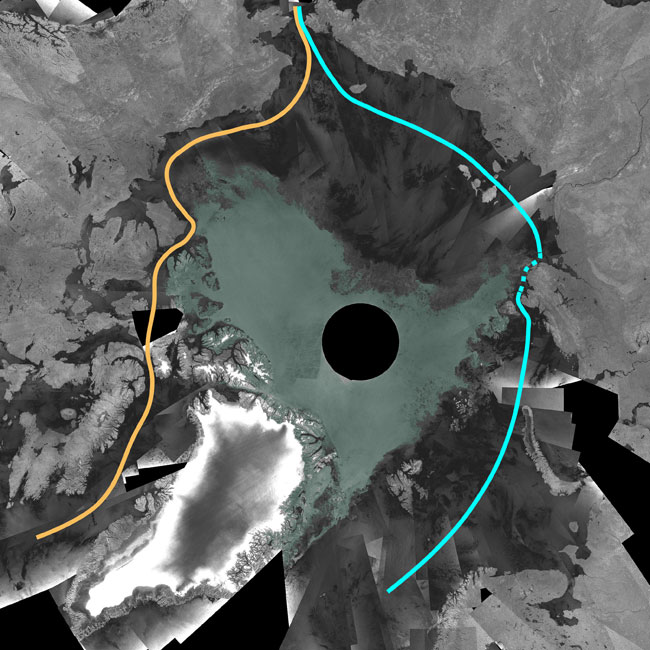
A fabled sea route above North America linking the Pacific and Atlantic Oceans has become a reality thanks to global warming.
Scientists have confirmed that in August, Arctic sea ice shrank to its lowest levels since satellite measurements began monitoring the region nearly 30 years ago. One consequence of this is that the Northwest Passage has opened up much earlier than expected.
"We're several decades ahead of schedule right now," said Mark Serreze, a senior scientist at the University of Colorado's National Snow and Ice Data Center, which monitors the region.
The premature opening of the passage does not mean that climate models are unreliable, only that their predictions have been far too conservative, Serreze said. "They're getting the right trajectory, but they're too slow," he said.
Shorter sailing
The legendary passage was first navigated with great difficulty and using a relatively small ship by explorer Roald Amundsen in 1903 to 1906. Predictions for the opening of the Northwest Passage have ranged from 2012 to 2080 at their most conservative.
Fully navigable, the Northwest Passage will make the trip 4,000 miles shorter for ships traveling between Europe and Asia, allowing them to avoid the Panama Canal. The Passage was partially open for a time in 1998, but sailing a ship through at time would have been tricky, Serreze said.
Sign up for the Live Science daily newsletter now
Get the world’s most fascinating discoveries delivered straight to your inbox.
"I wouldn't have wanted to try it" in 1998, Serreze told LiveScience. "Through the years, it's become increasingly open, but still really had not remained open in any kind of viable way. 2007 is really the first year."
A ship attempting the passage now would have "clear sailing," Serreze said. "You'd go in through the Bering Strait between Alaska and Siberia, then a little north of Banks Island and then go through the passage."
Scientists predict that the Northwest Passage will be open much more frequently from now on, but that it will still not be a year-round option for ships. "Ice will still be there in the winter, because even in the greenhouse-warmed world, there's winter in the Arctic," Serreze said.
The premature opening of the Northwest Passage could mean that the Artic Ocean in general could be ice-free much earlier than climate models have predicted. "The notion of coming to an ice free Arctic Ocean even by 2030 is not totally unreasonable," Serreze said.
Models previously predicted the ice would clear sometime around the middle of the century.
Reasons unclear
Recent observations by the European Space Agency's Envisat satellite have shown that from 2006 to 2007, ice in the Arctic decreased by about 386,000 square miles (1 million square kilometers).
"The strong reduction in just one year certainly raises flags that the ice (in summer) may disappear much sooner than expected and that we urgently need to understand better the processes involved," said Leif Toudal Pedersen of the Danish National Space Center.
It could be that natural climate processes are helping to accelerate the effects of global warming, Serreze said.
"We're scratching our heads right now," he said. "There's a lot of factors that can be involved here."
- Video: Goldilocks and the Greenhouse
- IMAGE GALLERY: Glaciers Before and After
- Riches Await as Earth's Icy North Melts









